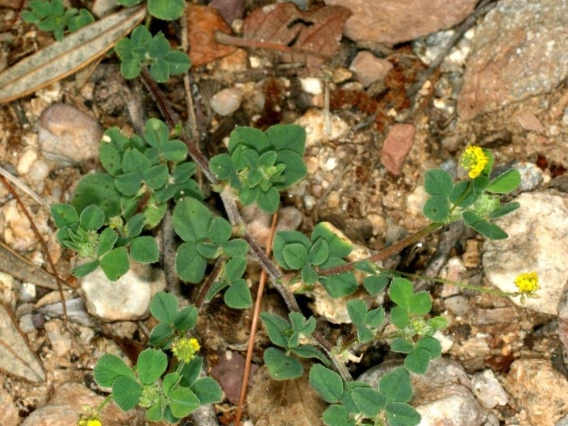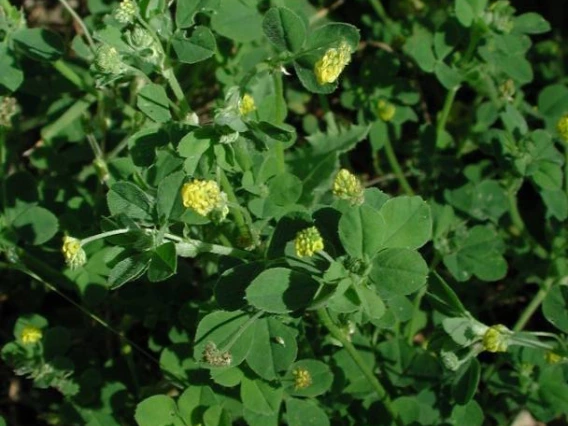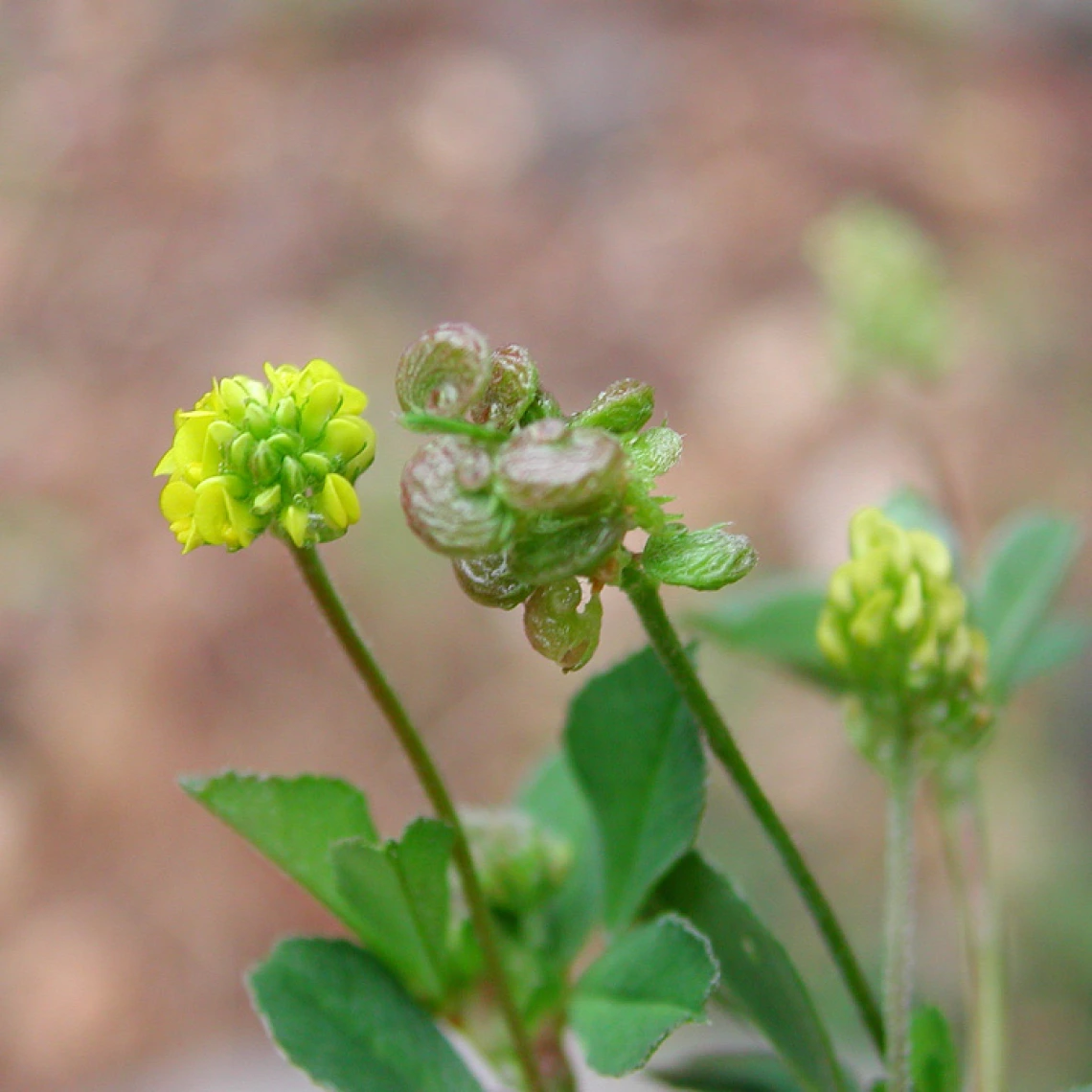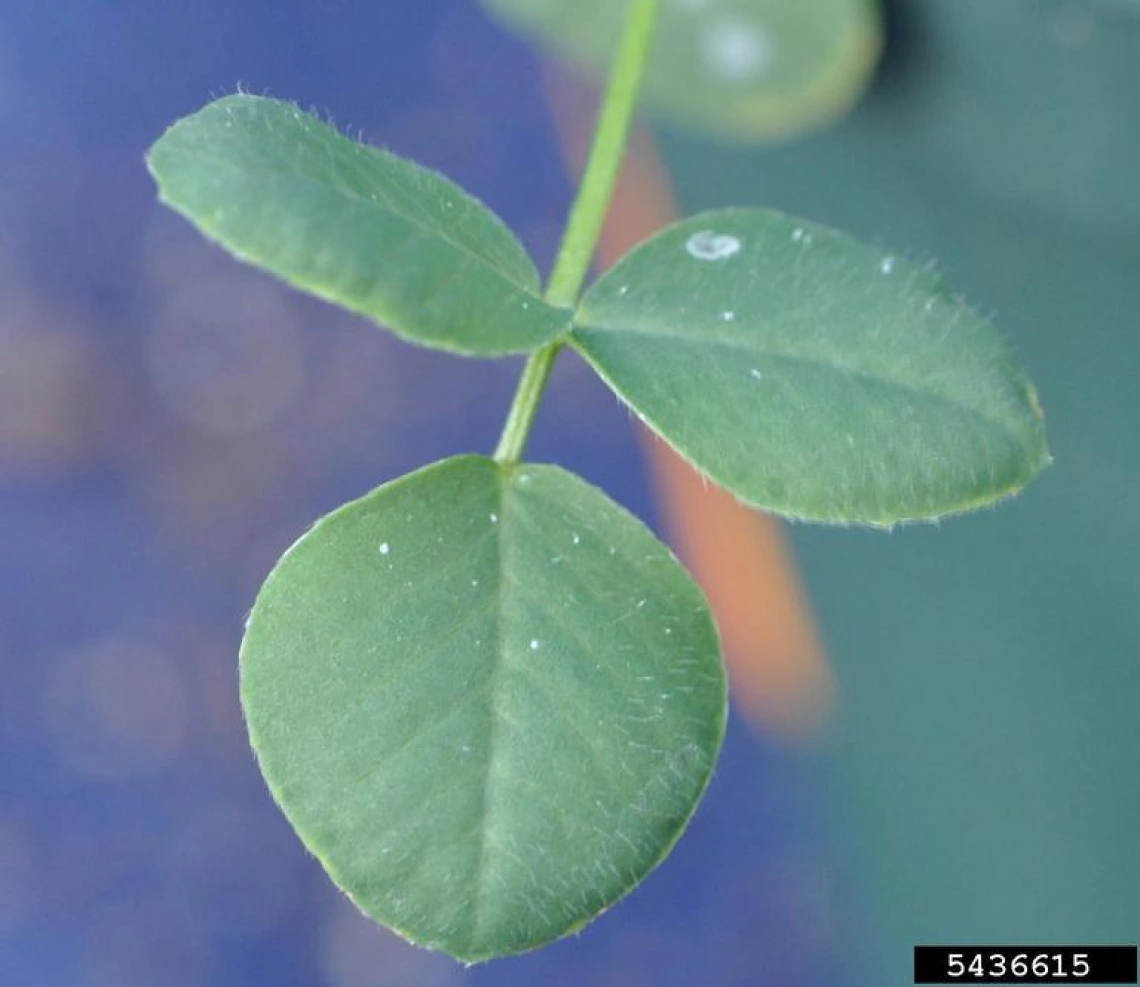Image

Black medic
Max Licher, swbiodiversity.org/seinet
Common Name(s)
Black medic
Scientific Name
Medicago lupulina
Family
Legume family (Fabaceae)
Reasons for concern
This plant is considered a nuisance in landscapes, gardens and fields. It can indicate low soil nitrogen. Its habit of growing close to the ground prevents the germination of native plants, and it easily outcompetes more desirable species, forming large, very dense colonies. Mature plants are very hard to pull.
Classification
Non-native
Botanical description
Low‐growing, spreading, broadleaf herbaceous plant.
Leaves
Dark green. Three oval to heart-shaped toothed leaflets at end of short stem.
Stem(s)
Prostrate, trailing stems can reach 2 feet long. Sometimes grows erect.
Flowers
Bright yellow, tiny ball, attached at end of short stem, blooming April to September. As many as 50 flower clusters on each plant.
Seeds
Formed in small pods, which are kidney-shaped, curved, and turn black when mature.
Roots
Taproot and very fibrous roots, making them hard to pull.
Native to
Eastern Europe and Asia
Where it grows
Generally likes full sun. Roadsides, compacted soil, fields, lawns, waste areas, disturbed sites from 2,500 to 9,000 feet.
Lifecycle
Annual or short-lived perennial
Reproduction
From seed
Weedy Characteristics
One of the first plants to grow in the spring, as early as March or April, depending on the weather. Flowering and seed production begin within 6 weeks after seedlings emerge. Therefore, this plant has a lot of time to produce seeds each season.
Control Strategies
Start monitoring very early in the spring and hand weed growth regularly before seed production. Preventing Black medic seed production is important in its control. Disturb the soil as little as possible when trying to remove the taproot and fibrous roots. Tamp down the soil to compact it to give invasive seeds fewer places to settle and germinate. This weed may be an indicator that the soil is compacted. Correct this by aerating and amending the soil. Mulching can prevent seed germination. Black medic doesn’t thrive in shade so planting taller plants can help control it. Repeatedly monitor previous infestations for new growth. Plant desirable native species to out-compete invasives.
References
- Black medic University of California Agriculture and Natural Resources – IPM Weed Gallery
- Black medic A Northern Nevada Homeowner’s Guide to Identifying and Managing Black Medic
- Black medic U.S. Forest Service







